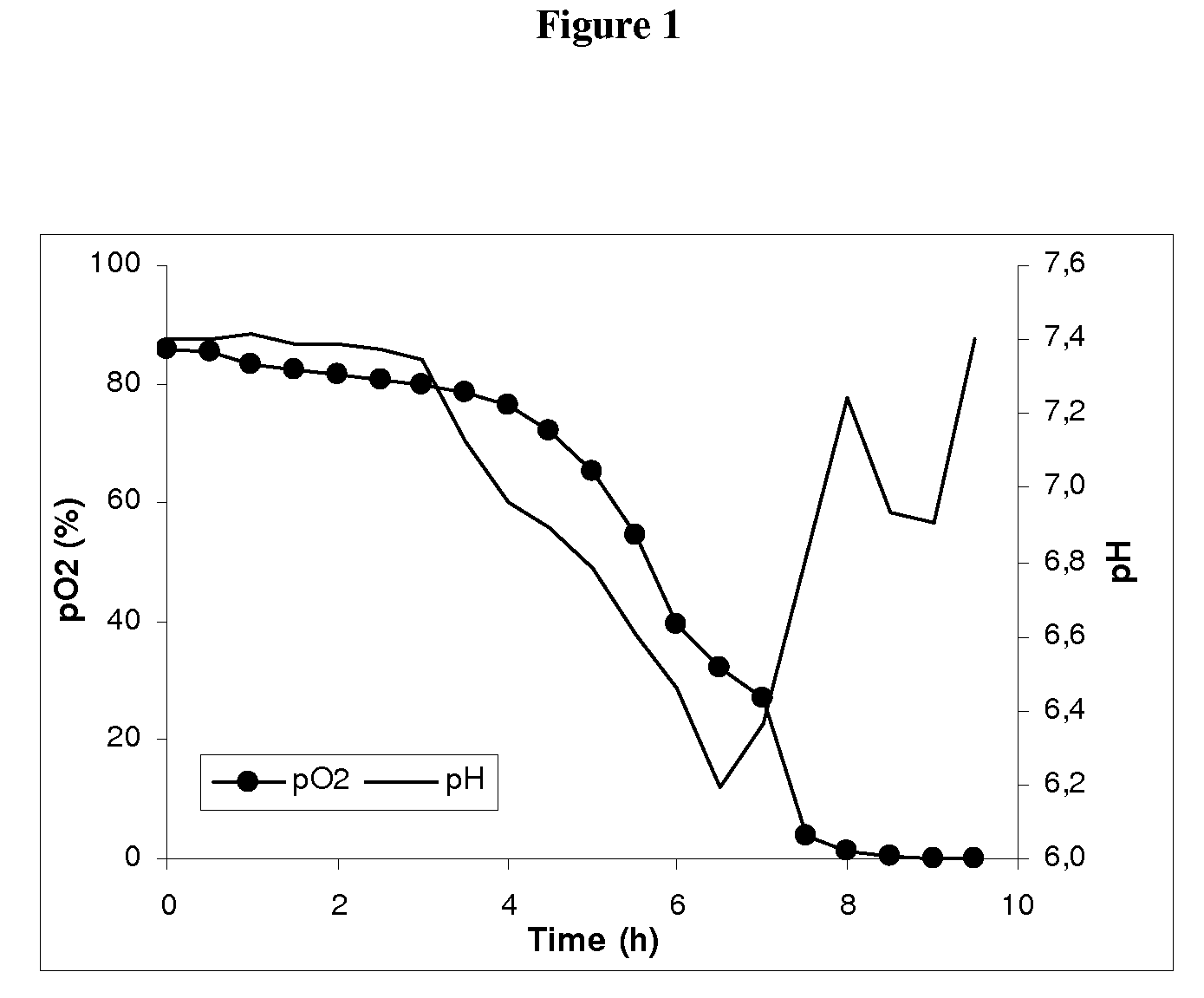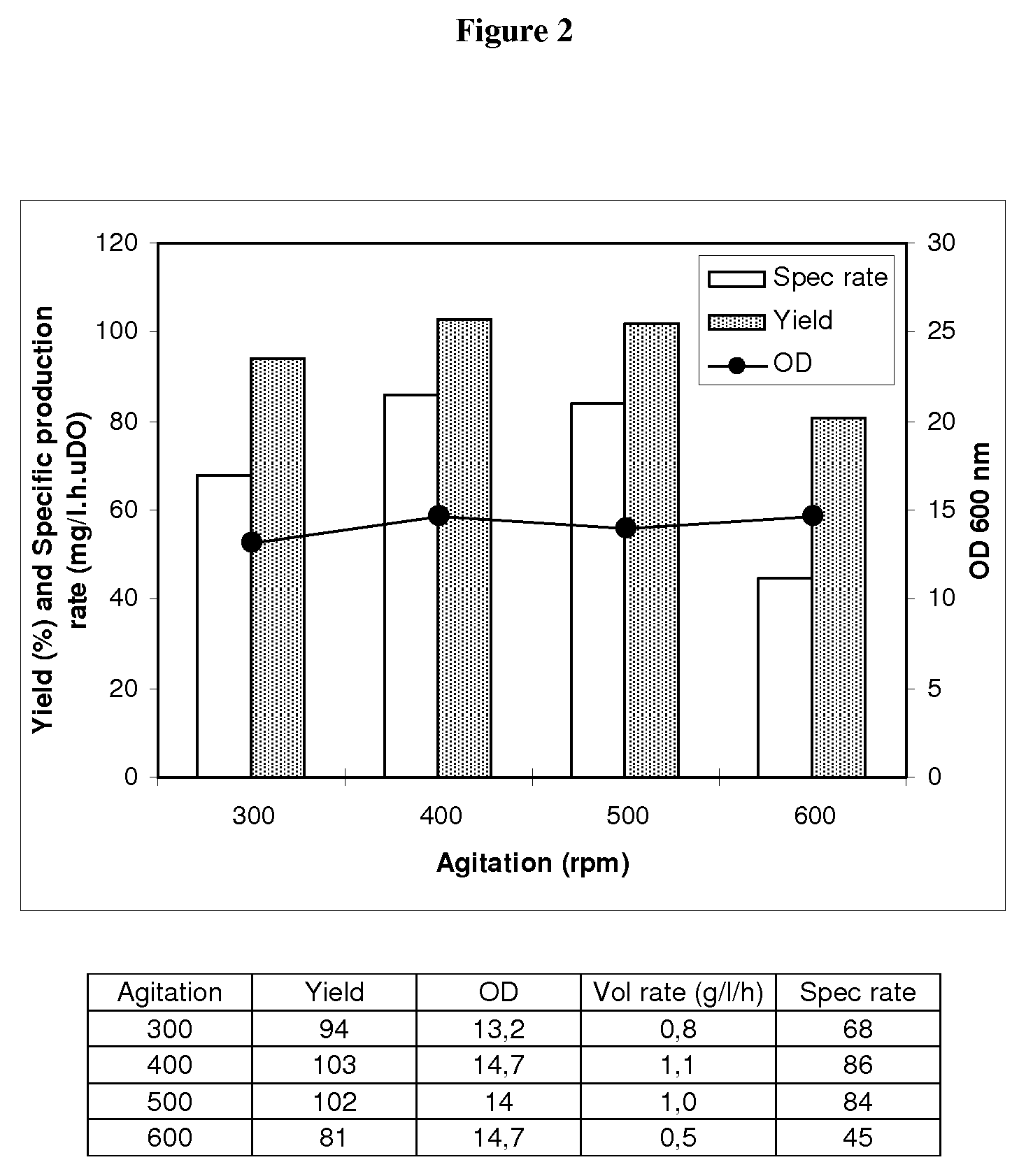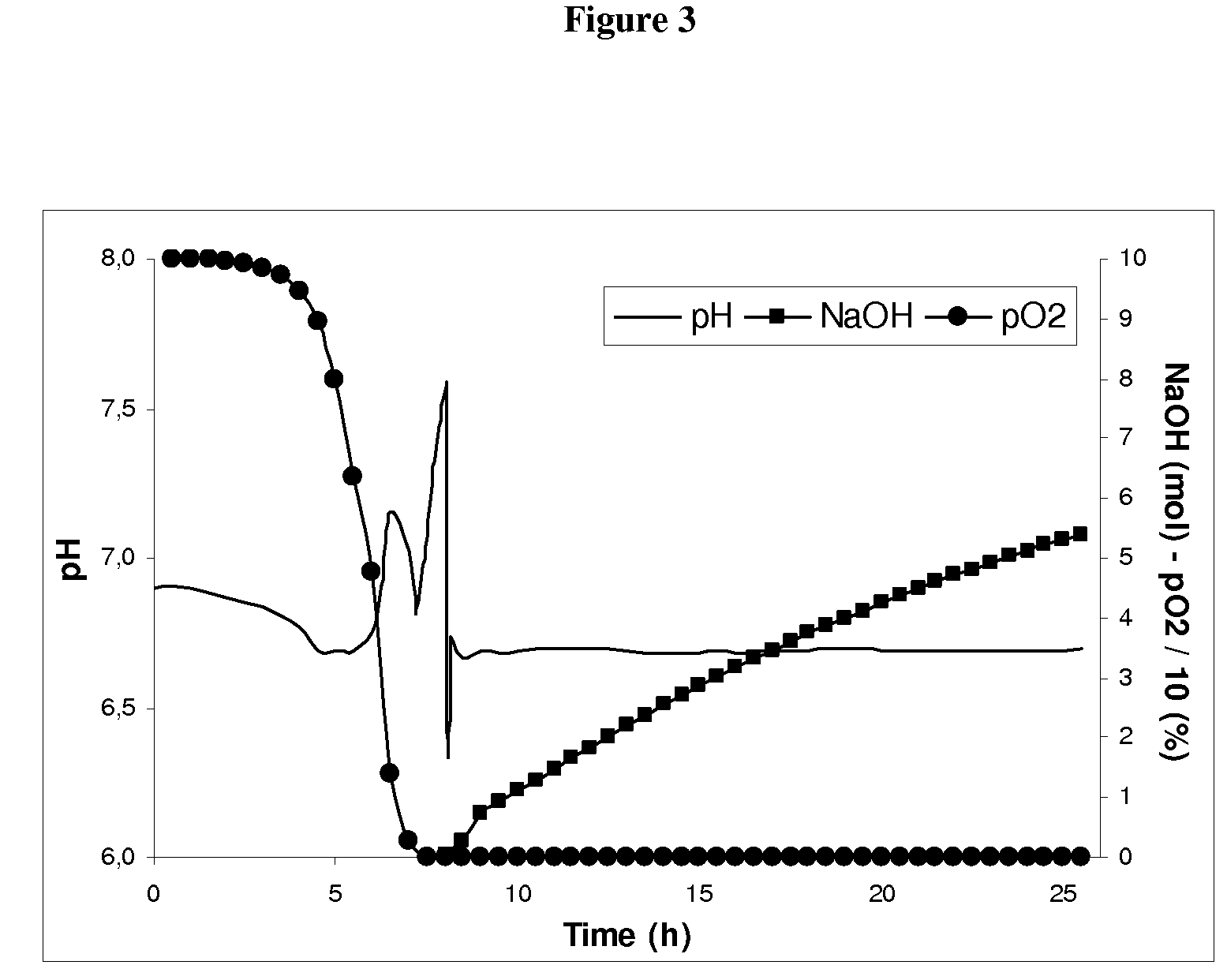Large scale microbial culture method
a microbial culture and large-scale technology, applied in the field of large-scale microbial culture methods, can solve the problems of poor molar yield of succinate per mole of glucose, poor process performance,
- Summary
- Abstract
- Description
- Claims
- Application Information
AI Technical Summary
Benefits of technology
Problems solved by technology
Method used
Image
Examples
example 1
PH Control
[0060]The detrimental effect of pH control during the oxygen rich cell growth was shown by the following data. Controlling at pH 7.0 with or without salt supplement and at low agitation speed of 500 RPM, the molar succinate yield is always lower than the expected value of ˜1.6.
[0061]
Experiment 1Experiment 2Oxygen Rich MediumLBLB + salt supplement2 g / L glucose2 g / L glucose30 microl / L antifoam 20430 microl / L antifoam 204200 mg / L Ap200 mg / L ApConditions37 C.37 C.500 rpm500 rpm1.5 L / min air1.5 L / min airpH = 7.0pH = 7.0Molar Succinate yield1.2≦1.2≦
example 2
Succinic Acid Production
[0062]This example includes a phase of preculture in an Erlenmeyer flask to generate sufficient inoculant, a phase of culture under oxygen rich conditions in a rich culture medium, i.e. comprising proteins and peptides as a source of nitrogen which can be assimilated by the microorganism. This phase allowing the production of biomass, and is followed by an oxygen lean acclimation phase and then an oxygen deprived production phase, allowing the actual production of succinates. The oxygen rich, lean and deprived phases are carried out in the same fermentor, and the strain used for exemplification herein was SBS550MG-pHL413.
[0063]This process is distinguished from the prior art in particular at the end of its oxygen rich phase by the absence of concentration of the biomass by centrifugation and also by the inclusion of an oxygen lean phase.
[0064]Preculture Phase:
[0065]SBS550MG-pHL413 is precultured in an Erlenmeyer flask for 17 hours at 37° C., under stirring at...
example 3
Effect of Oxygen During Growth
[0080]This example aims to study the effect of oxygen via variations in stirring rate. The production of succinic acid by the SBS550MG-pHL413 strain is carried out under CO2 in the absence of growth. The growth phase is carried out beforehand under oxygen rich conditions according to the “oxygen rich phase” protocol of Example 2, and the effect of stirring at 18 hours under CO2 is shown in FIG. 2.
[0081]A very significant effect of this parameter on the performance is observed. The optimum is situated at 400-500 rpm for productivity and yield, both of which are greatly reduced at 600 rpm.
[0082]The transfer of oxygen therefore constitutes an important parameter for the induction of the metabolic pathways involved in the production of succinic acid. One hypothesis would be that the induction requires a phase with little or no dissolved oxygen content (pO2) at the end of the oxygen rich phase to acclimate the cells to low oxygen—In other words, an oxygen le...
PUM
| Property | Measurement | Unit |
|---|---|---|
| temperature | aaaaa | aaaaa |
| temperature | aaaaa | aaaaa |
| temperature | aaaaa | aaaaa |
Abstract
Description
Claims
Application Information
 Login to view more
Login to view more - R&D Engineer
- R&D Manager
- IP Professional
- Industry Leading Data Capabilities
- Powerful AI technology
- Patent DNA Extraction
Browse by: Latest US Patents, China's latest patents, Technical Efficacy Thesaurus, Application Domain, Technology Topic.
© 2024 PatSnap. All rights reserved.Legal|Privacy policy|Modern Slavery Act Transparency Statement|Sitemap



